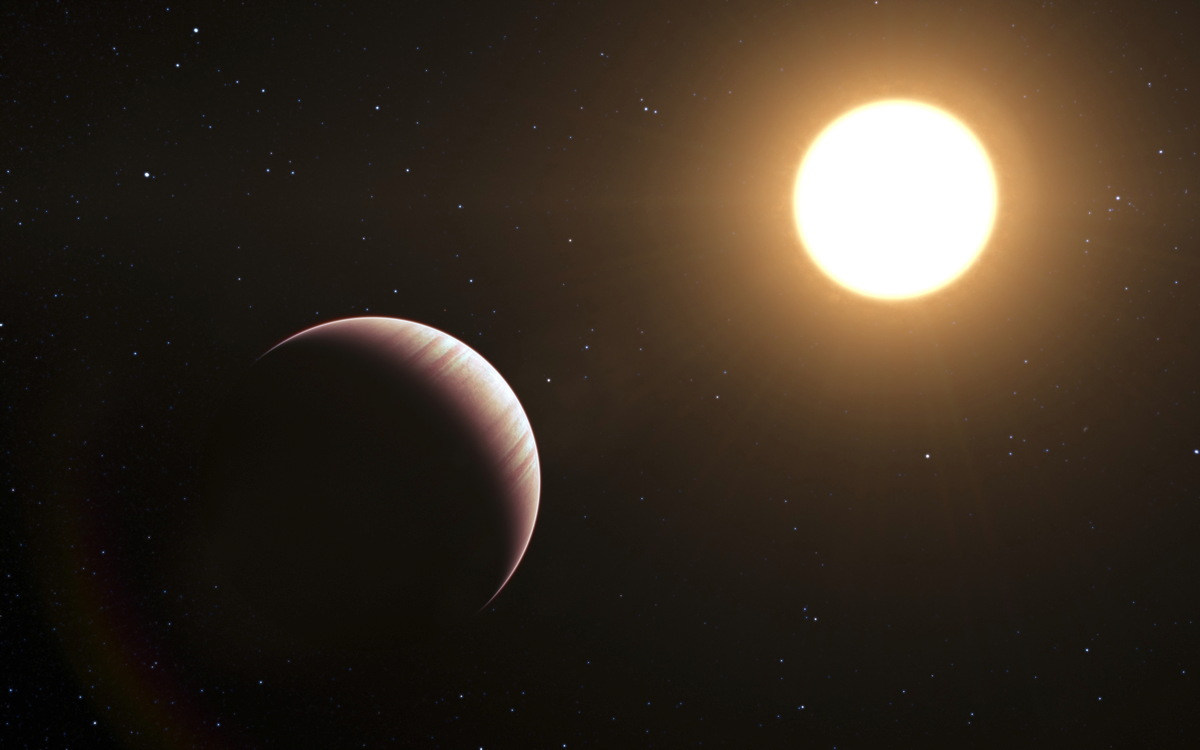
Some huge alien worlds were probably pulled into their puzzling orbits by nearby planetary neighbors circling on a different plane, a new study reports.
"Our results imply that there is a diversity of architectures for planetary systems, and that planetary systems aren't always flat like the solar system," said study lead author Rebekah Dawson of the University of California, Berkeley.
Dawson and co-author Eugene Chiang, also of UC Berkeley, investigated "warm Jupiters," enormous exoplanets that orbit much closer to their host stars than Saturn and Jupiter do in Earth's solar system (but not as close as "hot Jupiters," some of which can complete one lap around their parent stars in less than a day). [The Strangest Alien Planets (Gallery)]
Warm and hot Jupiters must have migrated inward significantly, astronomers say, because theory predicts that gas giants can only form relatively far from their stars — generally, beyond the "snow line," where it's cold enough for water and other volatile materials to condense into ice grains. But just what's driving such dramatic planetary movement has been a matter of debate.
Dawson and Chiang looked at six exoplanetary systems, each of which harbors a warm Jupiter with a large, more distantly orbiting planetary companion. For each system, they ran about 1,000 computer simulations that modeled the two planets' orbital dynamics.
The results suggest that when the two worlds' orbits are inclined at a certain angle relative to each other — between 35 and 65 degrees — the companion can push the warm Jupiter closer and closer to its star.
"In the type of evolution we studied, some warm Jupiters are in the midst of a slow evolution and may one day become hot Jupiters," Dawson told Space.com via email. "There are other channels for forming hot Jupiters, and in the future, we plan to quantify what fraction of hot Jupiters may come through this channel."
Get the Space.com Newsletter
Breaking space news, the latest updates on rocket launches, skywatching events and more!
The origin of such worlds' mutually inclined orbits is another mystery, since planets are thought to form in the same plane from a flat disk of dust and gas surrounding a newborn star. Gravitational interactions among young planets may yank some of them askew, leading to tilted orbits, Dawson said.

"I wouldn't say flat systems are rare; the compact systems of small planets discovered in abundance by the Kepler mission are statistically consistent with being mostly flat," Dawson said.
NASA's Kepler spacecraft launched in 2009 to determine how commonly Earth-like planets occur in the Milky Way galaxy. The $600 million mission has spotted nearly 1,000 exoplanets, with more than 3,000 others awaiting confirmation by follow-up observations and analysis.
Kepler's original planet hunt came to an end in May 2013, when the second of the spacecraft's four orientation-maintaining reaction wheels failed, robbing the telescope of its superprecise pointing ability. Kepler has now embarked on a new mission called K2, during which it will scan the skies for a number of cosmic objects and phenomena.
Follow Mike Wall on Twitter @michaeldwall and Google+. Follow us @Spacedotcom, Facebook or Google+. Originally published on Space.com.
Join our Space Forums to keep talking space on the latest missions, night sky and more! And if you have a news tip, correction or comment, let us know at: community@space.com.

Michael Wall is a Senior Space Writer with Space.com and joined the team in 2010. He primarily covers exoplanets, spaceflight and military space, but has been known to dabble in the space art beat. His book about the search for alien life, "Out There," was published on Nov. 13, 2018. Before becoming a science writer, Michael worked as a herpetologist and wildlife biologist. He has a Ph.D. in evolutionary biology from the University of Sydney, Australia, a bachelor's degree from the University of Arizona, and a graduate certificate in science writing from the University of California, Santa Cruz. To find out what his latest project is, you can follow Michael on Twitter.










